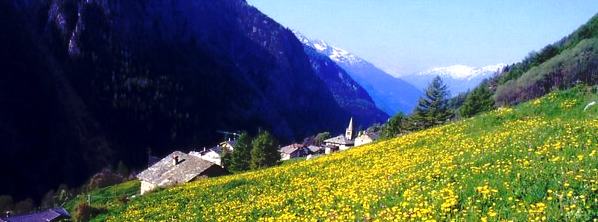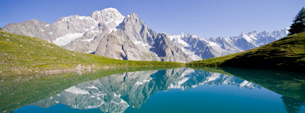Nature

In these valleys encircled by peaks and glaciers, where the mountainsides are covered with woods and conifer trees that are home to a whole host of fascinating wildlife, it is still possible to appreciate the mountains at their most authentic, virtually unchanged from thousands of years ago, when the neighbouring peoples began bringing their wares across the Great Saint Bernard Pass, as well as the other passes that still exist along the border with the Valais Canton in Switzerland.
An amphitheatre of lofty peaks culminating in the Dent d'Hérens (4171m) encloses some twenty glaciers that provide water to a number of alpine lakes, including those of Thoules, Cornet, Fenêtre, Livournea, Arpisson and the large hydroelectric basin of Place Moulin. Amid these mountains live ibex, chamois and animals that change the colour of their fur in the winter, such as hare, ermine and partridge. The middle-altitude zone features several large areas in which transhumance is still common: the herds of cattle are driven up to the summer mountain pastures in June, moving higher up as the summer progresses, until September, when they are brought back down to the valley.
The Great Saint Bernard Valley is crossed through by the Artanavaz Torrent, which then flows into the Buthier Torrent in the Valpelline; at Oyace, the powerful action of the waters of the torrent has eroded away a deep groove in the rock of over 50 metres: the Betenda Ravine, which can easily be crossed over the splendid seventeenth-century stone bridge.










